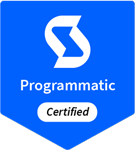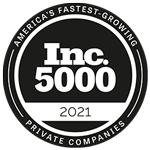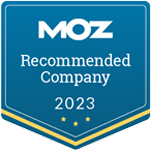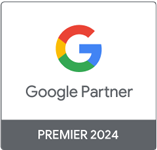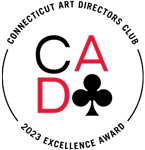When it comes to your digital marketing, it’s not enough to have a lot of traffic; if you want to see success, you need to turn those visitors into loyal customers. One of the best ways to do this is by understanding your conversion rate and optimizing your website to drive more purchases, form-fills, and other types of conversions. This process, known as Conversion Rate Optimization (CRO), can help you increase your conversion rate, expand your customer base, and grow your business.
What is Conversion Rate Optimization (CRO)?
A conversion happens when a user visits your website and completes a specific action. Depending on your business and unique goals, a conversion could be a purchase, newsletter signup, or a request for quote (RFQ) form-fill. Your conversion rate is the number of times a user completes your goal divided by your traffic. Conversion Rate Optimization involves maximizing the effectiveness of your website by improving the user experience, and providing value and enticing your visitors to take that conversion next step, which ultimately leads to a purchase, signup, or other action
When you invest in Conversion Rate Optimization, you’ll enjoy a variety of benefits, including:
Often, the key to building a loyal customer base is to understand your audience. CRO helps you do this by analyzing how users interact with your site, what content they are consuming, how long they stay on each page, etc. All of this information can help you finetune your online presence to yield more conversions.
From marketing dollars to team members, business resources aren’t infinite. Therefore, it’s crucial to ensure you’re maximizing what you have available to you. With CRO services, you can identify tactics that lead to high-quality conversions without exhausting your resources. Even small changes, such as adding calls to action (CTAs) on your content, can lead to significant increases in conversions (and revenue).
As previously mentioned, CRO can help you learn how visitors interact with your website. This information isn’t just beneficial for understanding your audience – it can also help you finetune your site to ensure each user has a positive experience. That way, visitors will be more motivated to convert, and may even become repeat customers.
Zero Gravity Marketing's Approach to Conversion Rate Optimization
When it comes to optimizing conversion rates, our goal is two-fold. First, we want to diagnose conversion rate problems, and then we want to prescribe the right fixes. From improving your website’s speed to adding incentives, making forms more user-friendly, and integrating valuable content offers, there are a variety of ways we can optimize your site to guide visitors down the marketing funnel. Zero Gravity Marketing’s Conversion Rate Optimization services are comprised of a four-part structure that allows us to redesign your website in accordance with your audience’s expectations.
Our four stages of CRO development include:
1. Data Segmentation
A thorough review of your analytics allows us to provide data-driven recommendations for positive change. By segmenting your data, we’ll be able to identify outliers and recommend potential tests to appeal to different segments uncovered by our research. For example, we’ll report the average number of visits it takes to receive a conversion, as well as the source of all visits and the number of conversions by source.
2. Information Architecture
Next, we can validate the current navigation scheme of your website or recommend a new structure that will improve overall usability, facilitate better Search Engine Optimization (SEO) by adding new pages, and channel visitors to conversion points.
3. Website Flow
After reviewing your company’s behavior flow reports, top pages and entrances, top exit points, and other important Google Analytics metrics, we’ll build an understanding of where your drop-off points – or the points at which customers exit your website – are. This allows us to recommend improvements to the flow of your website that will lead to higher conversion rates.
4. User Experience (UX)
Finally, we’ll assess the usability of your website from users’ perspectives. This includes examining CTAs, conversion points, and the number of clicks it takes to convert. We’ll also identify high-value actions (HVAs), which engage with visitors and lead to conversions. Additionally, we can install software like HotJar or Crazy Egg on your site to monitor user activity patterns. This provides valuable insights, such as the types of content visitors prefer, whether they engage with the hero CTA or gravitate towards a secondary CTA, and more.
Frequently Asked Questions
A conversion funnel (also called a purchase funnel) is a model that allows you to visualize users’ journeys to becoming customers or clients. While conversion funnels may differ in structure based on your business or marketing strategy, they typically include five main categories:
- Awareness – This is when users first encounter your brand. When focusing your efforts on this stage of the funnel, your goal is to attract potential customers to your website.
- Interest – During this phase, you’ll want to build visitors’ interest in what your brand has to offer.
- Consideration – After your audience becomes interested in your brand, they’ll begin considering whether to purchase a product or sign up for your services. They might compare things like cost and convenience or read reviews from other customers before making a decision.
- Conversion ¬– Finally, after moving through the initial three stages, visitors will complete the funnel by converting. Depending on your business goals, this could be a purchase, contact form-fill, etc.
It’s important to keep in mind that the final stage of the conversion funnel isn’t your ultimate goal. Rather, you should aim to retain customers and encourage repeat purchases and overall brand loyalty.
To calculate your conversion rate, you’ll need two numbers: your total conversion actions and your total site visits. Divide the number of conversion actions by the total visits and multiply by 100 to get your conversion rate.
For example, if you had 10,000 visitors in one month and 400 purchased a product, your conversion rate would be four percent.
There are a variety of ways you can test CRO improvements; however, the most common are:
- A/B Testing – During this test, two versions of your site are shown to users. Then, the conversion rates of each version are compared to determine which is most effective.
- Multivariate Testing (MVT) – This form of testing is similar to A/B testing, but tests multiple variables at once.
The primary way to measure your Conversion Rate Optimization success is by tracking your conversion rate. If it starts to increase, you’ll know that your efforts are working. There are a few other valuable metrics you can measure to determine the effectiveness of your CRO, such as:
- Bounce rate, or the percentage of users who enter your website and leave without visiting other pages.
- The average time each user spends on your site (regardless of how they interact with it).
- Shopping cart abandonment rate, or the percentage of users that add products to their cart and leave without purchasing.
- Cost per conversion, which shows how much it costs to obtain a lead who makes a successful conversion.
Optimize Your Digital Presence with Help from Zero Gravity Marketing
Are you looking to increase conversions and ramp up your CRO strategy? Contact Zero Gravity Marketing to get started improving your sales funnel.
